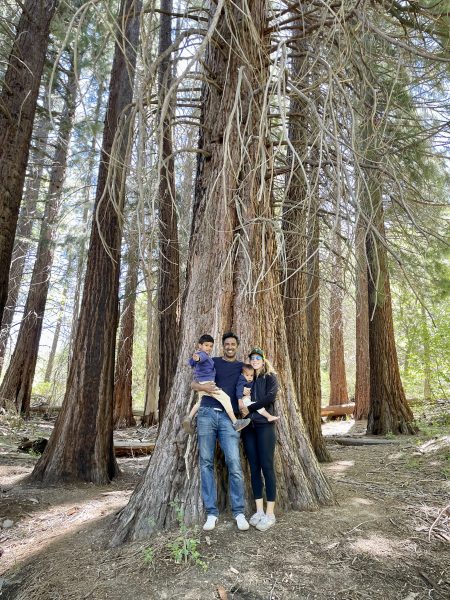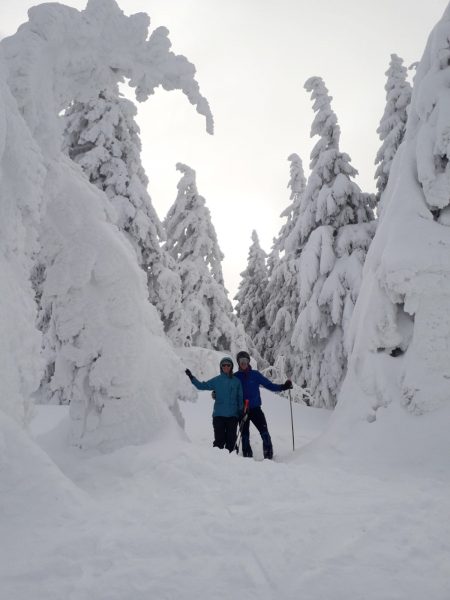By Mathieu Boudreau

This MRM Highlights Pick interview is with Joseph Woods and Divya Bolar, researchers at the University of California San Diego (UCSD). Their paper is entitled “VESPA ASL: VElocity and SPAtially Selective Arterial Spin Labeling”. It was chosen because of the exemplary reproducible research practices implemented by the authors, who shared their data, simulation code, and analysis code on Zenodo.
MRMH: To start off, please tell us a bit about yourselves and your backgrounds.
Joseph: I did my undergraduate degree at Southampton University in the UK, where I studied maths and physics. I got into MR research almost accidentally – after my undergrad, I was looking at different potential research paths like photonics, microscopy, and MRI. I came across a DPhil (PhD) course at Oxford that was still open. I submitted an application and they very kindly took a chance on me, given that I had no biomedical imaging experience of any sort. After my DPhil at Oxford, I went to work with Div and Eric Wong at UCSD. And now I’m back at Oxford.
Divya: I was a biomedical and electrical engineering undergrad at Johns Hopkins, and in my last year I took a class called Magnetic Resonance in Medicine taught by Elliot McVeigh, an MRI guru and pioneer of cardiac imaging. I was blown away by the course. The physics behind MRI fascinated me – how spinning protons could create an image of the human body – and I was immediately hooked. I graduated soon after and knew two things for sure: one, that I wanted to study MRI, and, two, that I wanted to move to California. I searched up and down the California coast and ended up working with Professor Paul Friedman at UCSD on cardiopulmonary MRI. Serendipitously, I shared lab space with Eric Wong, Rick Buxton, and Tom Liu, who were always talking about this arterial spin labeling technique – little did I know that they were world experts in the field! I knew almost nothing about ASL, but remember saying to Dr. Friedman, “Hey, there are these researchers using ASL to image perfusion in the brain, maybe we could use it in the lung??” So, pulmonary ASL became my main project and the rest, so to speak, is history.

MRMH: Before we dive into your paper, could you give us a brief overview on the difference between spatially selective and velocity-selective ASL?
Joseph: Sure – they are two main categories of ASL. Spatially selective ASL typically labels blood outside of the brain, in the neck, using a spatially selective inversion pulse. The blood then flows into the brain and we acquire an image after a specific time delay. Widely-used spatially selective ASL techniques include pulsed ASL and pseudo-continuous ASL (PCASL). In contrast, velocity-selective ASL labels blood everywhere in the brain based on a pre-specified velocity profile, so that things that are moving very slowly don’t get labeled, whereas things that are moving above some threshold (like blood) do. The labeled blood then flows into the tissue and we acquire an image.
MRMH: Thanks! Can you give us an overview of your paper?
Joseph: The aim of this paper was to combine these two categories of ASL into a single technique so that we can leverage the benefits of both. In other research published a few years ago, Div found that acquiring both velocity-selective and spatially selective ASL images is useful, because while the velocity-selective images would give you a measurement of tissue perfusion that is not sensitive to transit time, spatially selective ASL is able to provide information about the transit time, which can be long in cardiovascular diseases. So, we worked towards combining the two into a single scan using an efficient technique called Hadamard encoding, that doesn’t require extra scan time, and we called this technique VESPA. We can use the images to get a quantitative estimate of the true tissue perfusion, and also a quantitative measure of the transit time.

Divya: I’d just add that back when we were doing ASL in moyamoya at Boston Children’s Hospital, we found that PCASL and pulsed ASL approaches failed to provide accurate perfusion since these patients have pathologically narrowed arteries that result in long transit times. The CBF images would look totally wonky even in asymptomatic patients; there would be huge perfusion deficits, yet we knew that the brain was getting adequately perfused based on conventional angiography findings and lack of acute neurologic symptoms. We decided to use the VSASL technique to circumvent the transit delay – it worked like a charm and gave us accurate perfusion. But looking back at the pulsed ASL data, we were like, “Wow, there’s a lot of useful information here!” We could visualize the volume of at-risk tissue and the collateral pathways maintaining flow to this tissue. Acquiring images with both techniques provided complementary information and gave us a more complete picture of these patients’ cerebral circulation. The idea for combining PCASL and VSASL came to mind soon after, though actually taking VESPA from concept to reality is really a testament to Joe’s creativity, tenacity, and hard work – he hit it out of the park!
Joseph: It was very much a team effort with lots of exchanges. I’m really grateful for Eric and Emma’s contributions, and for the conversations with Div.
MRMH: Is VESPA ASL aimed only at certain applications, or should everyone that does either spatial or velocity-based ASL be using it moving forward?
Joseph: Div can speak about the clinical uses much better than me, but I would say that there are some caveats to consider when deciding if you should be using VESPA. In the current implementation, when transit times are in a normal range, you take a little bit of a hit in terms of SNR compared with something like multi-delay PCASL, but there are some things we’re developing to address that SNR loss.

Divya: I’ll take a bolder stance than Joe and say, yes, this is what everybody should be using, and let me tell you why! Joe does make a good point, namely that because velocity-selective ASL uses saturation rather than inversion, there is an inherent SNR penalty. However, a lot of the newer approaches actually implement a velocity-selective inversion to get some of that signal back. Furthermore, if you’re just doing PCASL, you’re missing out on potential signal from blood immediately delivered to the microvasculature. By adding the velocity-selective labeling scheme, you get immediate delivery of the VSASL label, plus the delayed, high-signal PCASL label that follows. In a sense, you’re getting the best of both worlds. From a clinical standpoint, I would argue, because there are so many diseases in which there are changes or delays in arterial transit, such as stroke, carotid stenosis, and moyamoya disease, etc., having VESPA provide both accurate CBF and transit time information is invaluable. Even in patients without known steno-occlusive disease, there can be considerable arterial transit heterogeneity and delay, particularly as patients age. VESPA has the potential to provide more accurate CBF in these cases as well – and then of course, you get the cherry on the top, which is the arterial transit time map.
MRMH: To finish off, what do you enjoy doing when you’re not in the lab?
Divya: I’ve got a two small boys, a three year old and a one year old, so even though it sounds cliché, I do spend most of my time chasing them around! Before having children, I would say my main hobby was music: playing the guitar and going to live concerts. I’ve been to hundreds of live shows, and I hope to do a little bit more of that as COVID subsides.
MRMH: Is there any one show that stands out in your mind from all the ones you’ve seen?
Divya: I’m a big Phish fan, so maybe one of their New Year’s shows would figure among my all-time great experiences.
MRMH: What about you, Joe?
Joseph: My partner and I got an allotment this year. We rent a bit of land and grow vegetables on it, so I’ve been spending a lot of time doing that. I also enjoy running and cycling, and hiking/backpacking.






Inspired by this brilliant duo; articulate and committed scientists. Thank you for what is certain to be a hugely impactful discovery!